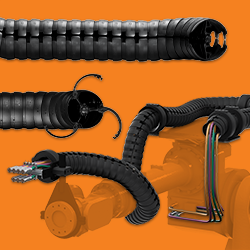Robots Helping Grads Get Jobs
Efficient 3D Object Segmentation from Densely Sampled Light Fields with Applications to 3D Reconstruction
Robotics makes baby steps toward solving Japan's child care shortage
Special Tradeshow Coverage for XPONENTIAL 2016
Autonomous Driving Systems
OpenROV Trident Pre-orders
America, Regulate Drones Now or Get Left Behind
Google Puts Boston Dynamics Up for Sale in Robotics Retreat
February Fundings And Acquisitions
Robotics expert: Self-driving cars not ready for deployment
What The Heck Is An Unmanned Ground Engineering Vehicle?
Artificial Skin That Glows, Stretches Could Change Robotics?
Postdoc's Trump Twitterbot Uses AI To Train Itself On Transcripts From Trump Speeches
Using Drones for Aerial Photography
How This New Drone Can Track Your Every Move
Records 976 to 990 of 1197
First | Previous | Next | Last
Featured Product

